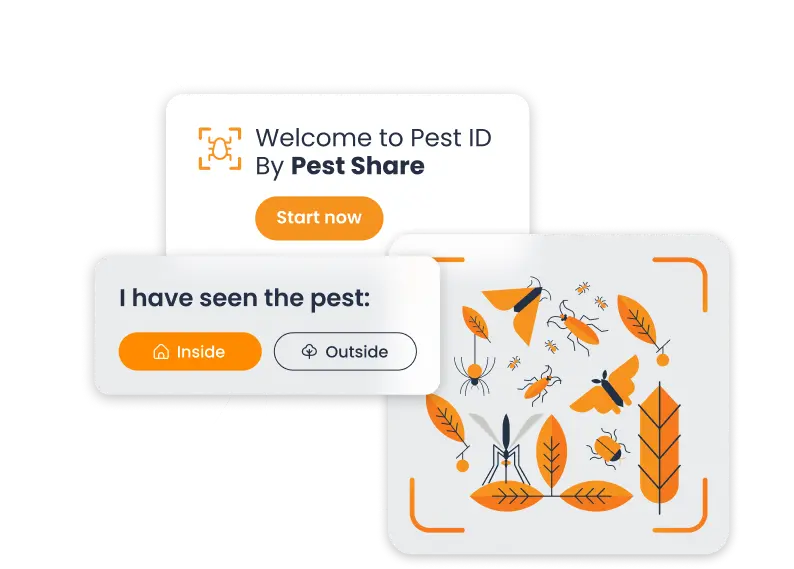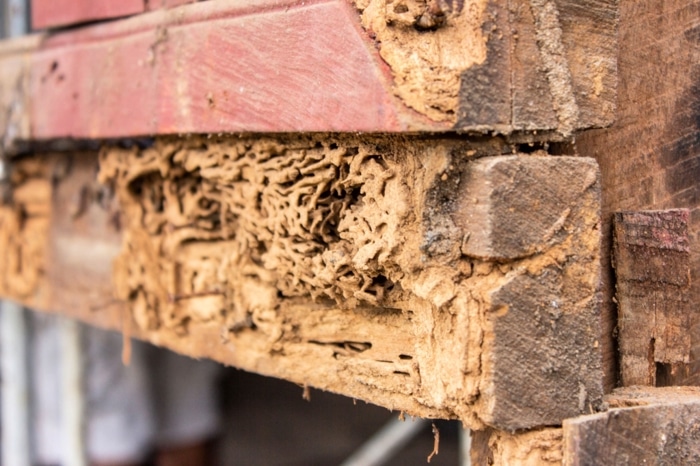Every year, unsuspecting homeowners face a silent destroyer – termites. These tiny pests, often unnoticed until significant damage is done, can compromise the structural integrity of a home, leading to costly repairs. Understanding what really causes termite infestations is crucial in protecting your most valuable asset – your home. This guide delves into the hidden world of termites, unravelling the mysteries behind their infestations and offering insights into effective prevention and control.
The Menace of Termites: A Hidden Threat to Homes
Termites are a nightmare for any homeowner. Capable of causing extensive damage without immediate detection, these pests are more than just a nuisance; they are a serious threat to the stability and safety of houses. Often, by the time their presence is noticeable, the damage is extensive and costly to repair. The key to safeguarding your home lies in understanding what draws these destructive pests and how to prevent their invasion.
What Causes Termites: The Biology Behind the Infestation
The cause of termite infestations is deeply rooted in their biology and social structure. Termites are attracted to cellulose-based materials, which are abundant in homes, particularly in wood, paper, and fabric. Their colonies are organised societies, with a king and queen responsible for reproduction, workers who forage for food, and soldiers who protect the colony.
Moisture is another critical factor in termite infestation. These pests thrive in damp environments, making homes with moisture issues particularly vulnerable. Leaky pipes, poor drainage, and improper ventilation create ideal conditions for termites to establish their colonies.
Environmental conditions also play a significant role. Termites are more active in warmer climates, explaining their prevalence in certain geographical areas. However, no region is entirely safe, as termites have adapted to survive in various environments, making them a nationwide concern.

Smarter Pest Control, Fewer Headaches.
Lifecycle and Habitats of Termites
To effectively combat termite infestations, one must understand their lifecycle and natural habitats. A termite colony begins with a swarming process, where reproductive termites, known as alates, leave their nest to start new colonies. Once they land, they shed their wings and pair up to become the king and queen of a new colony.
The lifecycle of a termite includes several stages: egg, nymph, and adult. The development from egg to adult can take several months, depending on the species and environmental conditions. During this time, the colony grows and the need for food increases, often leading termites to venture into homes in search of sustenance.
In their natural habitat, termites play a crucial role in the ecosystem by breaking down dead wood and other plant material. However, when they enter human dwellings, they become destructive pests. Understanding their natural behaviours and preferences can aid in identifying potential risks around your home and implementing effective prevention strategies.
Common Attractions for Termites in Residential Areas
Homeowners often unknowingly create environments that are highly attractive to termites. Woodpiles, tree stumps, and other cellulose-rich materials, when kept close to the house, serve as an open invitation to these pests. Gardens with heavy mulch or foliage against the home’s foundation can also provide a conducive environment for termites. These elements retain moisture and provide a direct pathway for termites to enter the home. Additionally, exterior wooden structures like decks and fences, if not properly maintained, can become gateways for termites seeking new territories.
Another often overlooked attraction is the accumulation of dead leaves and debris in gutters. This buildup retains moisture and can cause wooden parts of the roof and walls to decay, making them more susceptible to termite infestations. Ensuring gutters are clean and functioning properly is a simple yet effective step in reducing the risk of attracting termites.
Reason for Termites in House: Identifying Risk Factors

Understanding the specific conditions that make homes susceptible to termites is key in preventing infestations. One of the primary risk factors is moisture. Homes with poor ventilation, leaking pipes, or inadequate drainage systems create the damp environments termites thrive in. Regular inspections for water leaks and ensuring proper ventilation and drainage can significantly reduce this risk.
Another factor is direct wood-to-soil contact. Structures like porch steps, wooden support beams, and siding that are in direct contact with the ground provide easy access for termites. Creating a barrier, such as using metal supports or concrete bases, can prevent termites from reaching wooden elements of the house.
Older homes are also more prone to termite infestations due to ageing wood and potential gaps in the structure. Regular inspections and maintenance are particularly crucial in these homes to identify and address any vulnerabilities.
Structural Weaknesses and Termites
Certain building materials and construction flaws can make a house more inviting to termites. Cracks in the foundation, gaps around utility lines, and openings in brick or masonry can all serve as entry points for termites. Periodic checks and repairs of these potential entry points are essential in keeping termites out.
The type of wood used in the construction of the home can also impact its vulnerability to termites. Some woods are naturally more resistant to termite attacks, such as cedar and redwood, while others, like pine, are more susceptible. When repairing or adding to a home, choosing termite-resistant materials can provide long-term benefits.
Homes with crawl spaces or basements are particularly at risk, as these areas often have high humidity levels and are less frequently inspected. Ensuring these spaces are well-ventilated and dry is crucial in reducing their attractiveness to termites.
Minimising Risks: Preventive Measures Against Termites
Preventing termite infestations is far more manageable and cost-effective than dealing with an established colony. One of the most effective strategies is to eliminate moisture problems. This means repairing leaky faucets, water pipes, and AC units, as well as ensuring proper drainage around the foundation. Regularly cleaning gutters and downspouts to prevent water accumulation also plays a crucial role.
Another preventive measure is to maintain an 18-inch gap between soil and any wood portions of your home. This space not only discourages termites from climbing up but also allows for regular inspection of the foundation. For homes with crawl spaces, it’s important to ensure they are well-ventilated and dry.
Regular inspections by professional pest control services can be invaluable. These experts can identify potential risk factors and provide specific recommendations to fortify the home against termites.
Role of Regular Inspections and Maintenance
Regular inspections and maintenance are the cornerstones of effective termite prevention. Homeowners should schedule annual inspections with qualified termite professionals. These experts can spot early signs of termite activity, which is often difficult for the untrained eye to detect. They can also assess the property for conditions that might attract termites and suggest corrective actions.
Between professional inspections, homeowners should also conduct their own checks. This includes looking for signs of termites, such as mud tubes, discarded wings, or damaged wood. It’s also important to monitor areas where wood comes into contact with soil and to keep an eye on moisture levels in and around the home.
What Causes Termites in a House: Recognizing the Early Signs
Early detection of termites can save homeowners significant trouble and expense. Some signs to watch for include wood that sounds hollow when tapped, cracked or bubbling paint, and mud tubes on exterior walls. Also, be alert for termite droppings, which look like small, wood-coloured pellets.
If you notice any of these signs, it’s crucial to act quickly. Contact a professional pest control service to confirm the presence of termites and discuss treatment options.
Immediate Steps to Take in Case of Infestation
Upon discovering a termite infestation, the first step is to remain calm and avoid disturbing the termites. Disturbing them can cause the colony to scatter and spread, making treatment more difficult. The next step is to contact a professional termite control service. They will assess the extent of the infestation and recommend an appropriate treatment plan, which may include baiting systems, termiticides, or physical barriers.
Conclusion
Understanding what really causes termite infestations and taking proactive steps to prevent them are key to protecting your home. Regular maintenance, professional inspections, and prompt action at the first sign of termites can make all the difference. Don’t let termites take you by surprise – stay vigilant and ready to act. Remember, the best defence against termites is a good offence. Ready to take the next step in termite prevention? Reach out to a professional today and give your home the protection it deserves.





